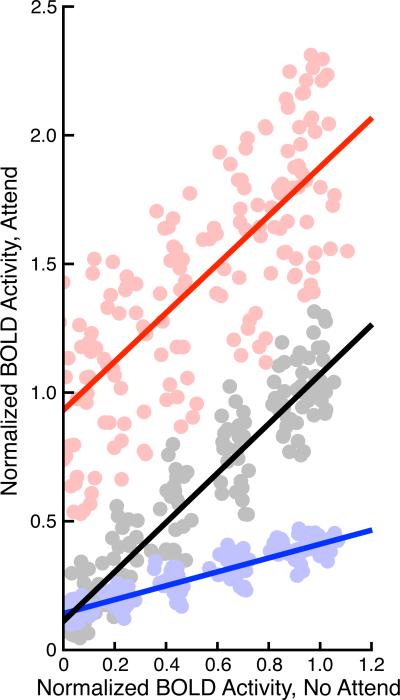5.
Attentional modulations are linear over V1. Normalized activity (see Methods) during No-Cue and Attend conditions is highly similar in Stay-On voxels (gray). Each point represents the mean normalized activity of all voxels with a set range of phase preferences over a single sample interval; preference and time are sampled to thirteen points each, providing 169 data points. The effect of attention over all points is well described by a linear fit (R2 = 0.92, slope 0.96, y-intercept 0.11). Changes in tuning curves observed in Turn-On (red) and Turn-Off (blue) voxels are also relatively well-described by linear functions (Turn-On: R2 = 0.61, slope 0.95, intercept 0.93; Turn-Off: R2 = 0.86, slope 0.27, y-intercept 0.14).

